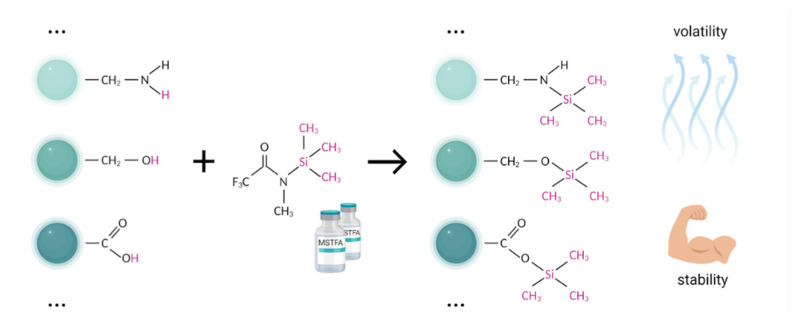Figure 4.
The typical scheme of trimethylsilylation. Bimolecular nucleophilic substitution (SN2) replaces the active hydrogen (-OH, -COOH, -NH, -NH2, and -SH) by the trimethylsilyl group. Compared to the initial compounds, silylated derivatives generally are more volatile and thermally stable, thus yielding advanced separation of symmetric and narrow chromatographic peaks.

